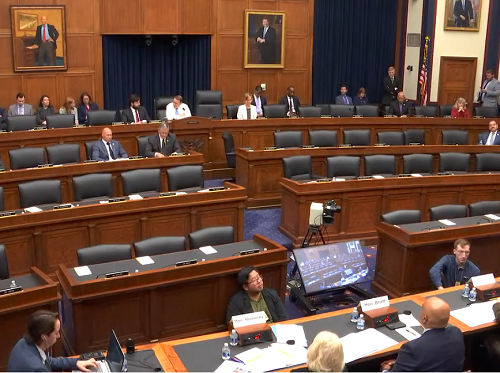The House of Representatives Committee on Transportation and Infrastructure held a hearing on May 15 to review and examine the federal response to the Francis Scott Key Bridge collapse outside Baltimore that occurred on March 26, as well as subsequent recovery operations.
[Above photo by the House T&I]
Rep. Sam Graves (R-MO), chairman of the House T&I committee, commended the federal, state, and local officials “working day and night” to clear the wreckage and debris from the bridge collapse and to reopen the shipping channel that supports the Port of Baltimore in his opening remarks.
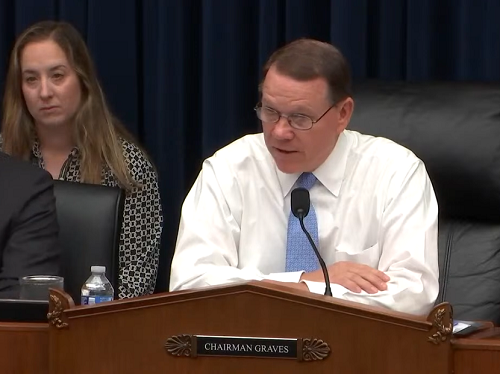
“I also want to express the committee’s appreciation to the harbor pilot and Maryland Transportation Authority police officers who saved countless lives by closing the Key Bridge prior to the incident, and to all first responders involved,” he added.
Aside from the status of the ongoing recovery efforts at the Francis Scott Key Bridge site, Rep. Graves focused on what the cost of the bridge’s ultimate replacement might be, noting that the Federal Highway Administration has already issued the Maryland Department of Transportation $60 million in “quick release” Emergency Relief Program funding.
[Editor’s note: The Maryland DOT recently released the video below of the controlled demolition of bridge debris in and around the cargo ship Dali.]
“Despite initial estimates of $1.2 billion to rebuild the bridge, media reports now indicate that Maryland estimates that the bridge rebuild may cost between $1.7 billion and $1.9 billion,” Rep. Graves said, stressing that “it is important that we have a firmer estimate” before further actions are taken to address the costs of a replacement effort.
“In addition, if the company that owned and operated the ship is found to be liable, we must make sure that the government actively works to recover any money it is owed,” he said. “That could help offset the bridge funding or be used to make the people and companies who rely on and work at the Baltimore Harbor whole.”
Rep. Rick Larsen (D-WA), the ranking member on the House T&I committee, stressed in his remarks at the hearing that several of the federal agencies involved in bridge recovery efforts are experiencing significant fiscal impacts as well.
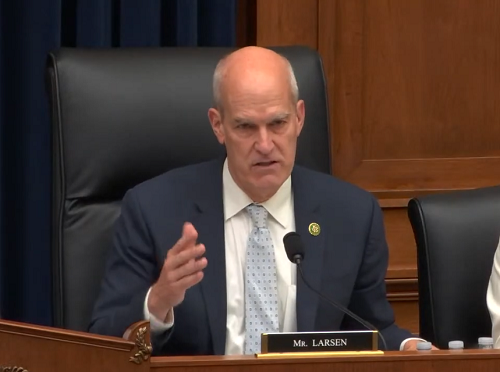
“The [U.S.] Coast Guard [USCG] has expended significant fiscal year 2024 operations and support funds to respond to this emergency,” Rep. Larsen said. “It is unreasonable to expect the service to absorb these response costs, which were obviously not budgeted for in advance, without impacting the Coast Guard’s ability to perform other critical missions. Similarly, the Corps [Army Corps of Engineers or USACE], in responding to the emergency, has used up FY 2024 operation and maintenance funds appropriated for Baltimore harbor and channel work. If not replenished, the diverted funding will impact planned maintenance for the Baltimore harbor once the response is complete and in future years.”
He added that the USACE Corps announced it is “reprogramming” $20 million in unused funds to continue channel clearing work. “This level of reprogramming is unprecedented and demonstrates—in the absence of supplemental funds provided by Congress for this clean up—the budgetary juggling the USACE has to do to get the bridge out of the water and off the vessel so the Port of Baltimore can reopen,” Rep. Larsen said. “That juggling will continue.”
Further perspectives related to the bridge collapse and recovery operations came from four witnesses at the hearing: Vice Admiral Peter Gautier, USCG deputy commandant for operations; Major General William “Butch” Graham, the USACE’s deputy commanding general for civil and emergency operations; Shailen Bhatt, FHWA administrator; and Jennifer Homendy, chair of the National Transportation Safety Board.
NTSB’s Homendy noted in her remarks that, “because our investigation into the bridge collapse is ongoing, there are limits to what I can say publicly at this time.”
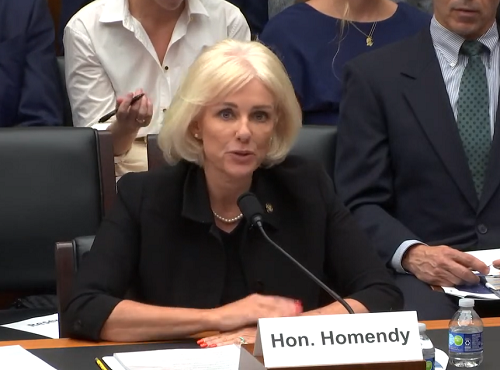
She pointed to a 24-page preliminary report issued by NTSB on May 14 regarding the agency’s current findings regarding the bridge collapse, yet stressed elements of that report “may be subject to change at a later date as new information comes to light.”
The NTSB’s preliminary report confirmed that the cause of the collapse was caused by the 947-foot-long Singapore-flagged cargo vessel Dali after it first lost electrical power and propulsion capability and then struck the southern pier supporting the central truss spans of the Francis Scott Key Bridge. A portion of the bridge subsequently collapsed into the river, with portions of the deck and the truss spans collapsing onto the vessel’s forward deck
Investigators also noted in the NTSB report that that the last inspection of the non-redundant steel tension members of the Francis Scott Key Bridge was completed in May 2023, with the last underwater bridge inspection completed in March 2021, and indicate that bridge inspectors rated the conditions of the deck, the superstructure, and the substructure as being in “satisfactory condition” prior to the Dali hitting the structure.
FHWA’s Bhatt noted that his agency continues to provide wide-ranging technical assistance to Maryland DOT regarding contract procurement for debris removal, procurement for reconstruction operations, and project delivery strategies to reconstruct the bridge quickly and safely.
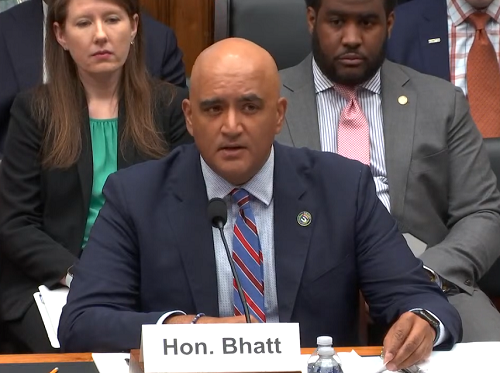
Bhatt noted that FHWA also is working with Maryland DOT to ensure that the new bridge will be built to current design standards and in accordance with all applicable Federal laws.
“FHWA has been in direct communication with Maryland DOT regarding all possible options for reconstructing the bridge and is committed to supporting these efforts so that the bridge can be reconstructed as quickly and safely as possible,” he noted in his remarks. “It is critical that we reconstruct this vital connection for people and goods traveling along the East Coast. Ensuring that the I-695 corridor is open, operational, and safe for the traveling public at the earliest possible moment is a top priority.”
Bhatt added that his agency is also working with a variety of federal agencies as well to hammer out “emergency procedures and considerations” in order to “expedite the environmental review and permitting processes for the future reconstruction” of the bridge.
“FHWA continues to meet with federal resource agencies to discuss permitting for reconstructing the bridge,” he emphasized. “As the President has said, we will not rest ‘until the cement has dried on the entirety of a new bridge.’”
 Top Stories
Top Stories
State DOTs Making Preparations for Wintertime Operations
December 12, 2025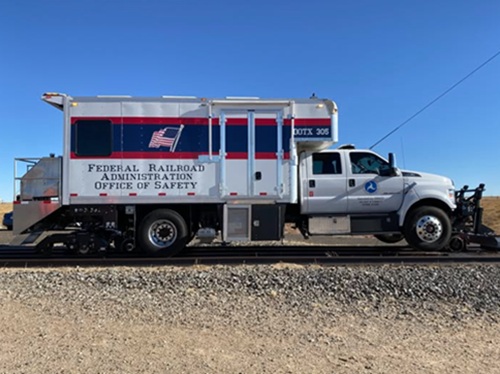 Top Stories
Top Stories
